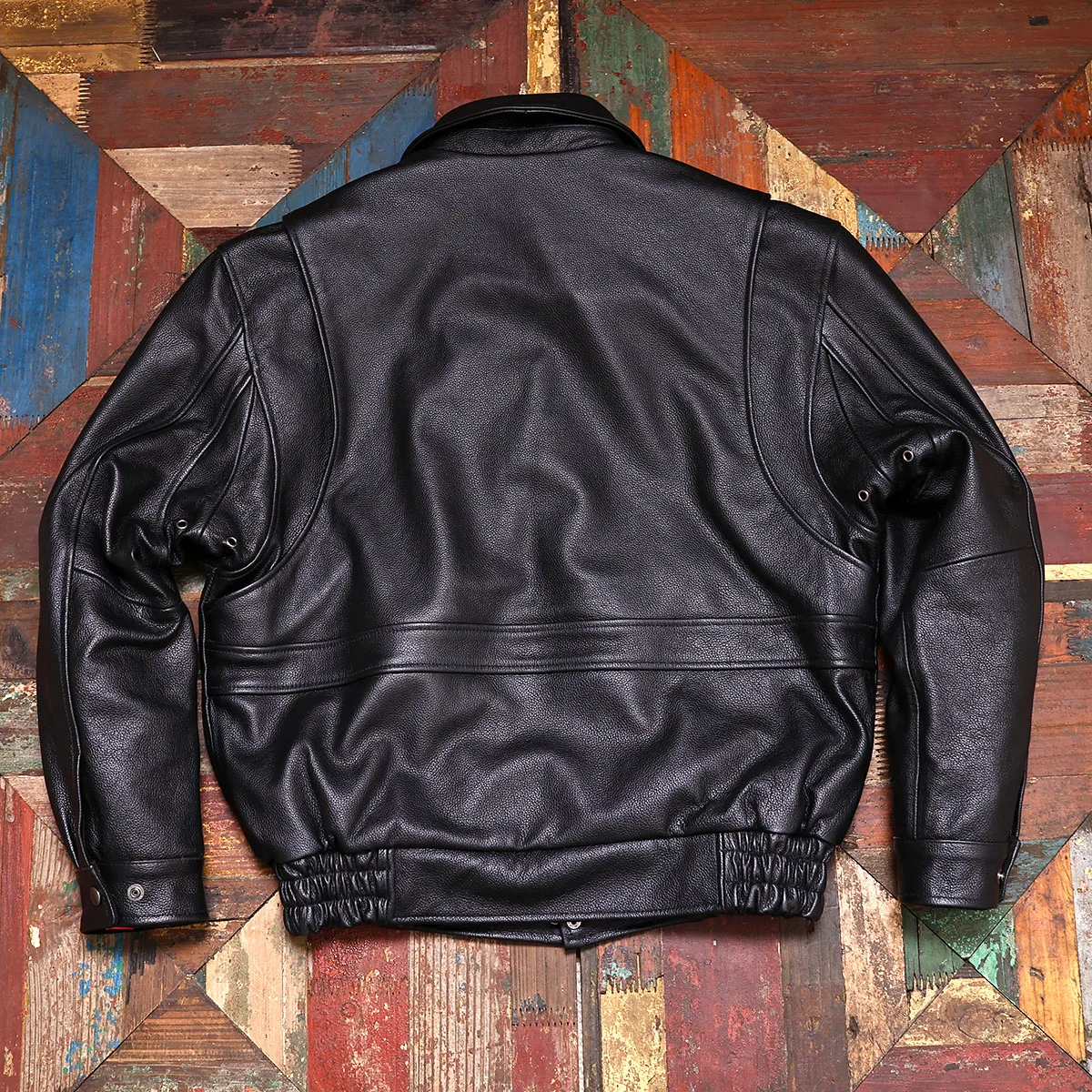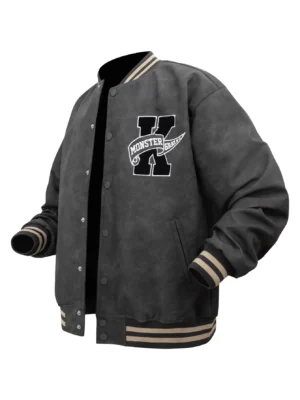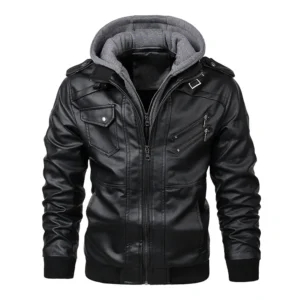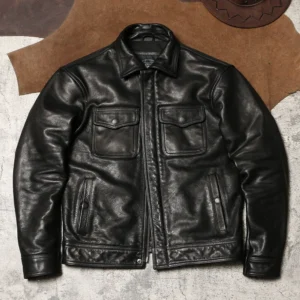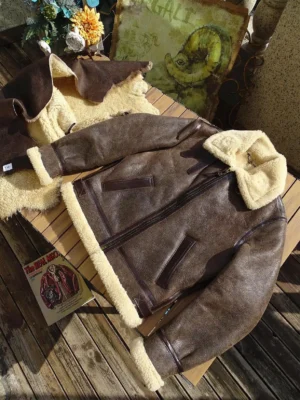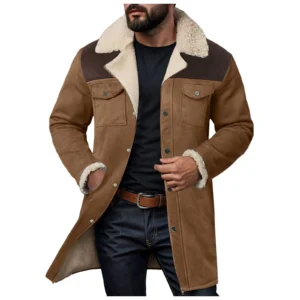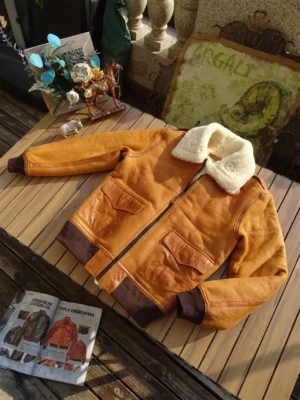The Enduring Appeal of Black Leather Jackets for Men
Few garments in men’s fashion have maintained their iconic status quite like the black leather jacket. Transcending decades of ever-changing style trends, this versatile piece has cemented itself as a true wardrobe staple that effortlessly blends rebellion with refinement. From casual weekend outings to evening events, a well-chosen leather jacket adapts to countless settings while making a confident style statement.
What makes the black leather jacket particularly special is its remarkable ability to:
- Instantly elevate simple outfits with an edge of sophistication
- Transition seamlessly across seasons with proper layering
- Develop a unique patina that tells the wearer’s personal story
- Provide functionality through durability and weather resistance
- Serve as a long-term investment that often improves with age
Beyond mere clothing, a quality men’s black leather jacket represents an investment in personal style that pays dividends for years or even decades. The timeless appeal extends across generations, with each era reinterpreting different black leather jacket styles while maintaining their fundamental allure.
Understanding Different Types of Leather Quality
Before diving into specific styles, it’s crucial to understand leather quality as this fundamentally determines your jacket’s appearance, durability, and value. The leather grade directly impacts how your jacket will age, feel against your skin, and withstand daily wear.
Full-grain leather: The highest quality available, featuring the complete, unaltered grain of the hide.
– Contains natural markings and character that tell the leather’s story
– Develops a beautiful patina over time that enhances its appearance
– Offers exceptional durability that can last decades with proper care
– Provides the best breathability and moisture resistance
– Commands premium pricing reflecting its superior quality
Top-grain leather: The second-highest quality, with the outermost layer slightly sanded to remove imperfections.
– Offers a more uniform appearance than full-grain
– Maintains good durability while being more affordable
– Features excellent flexibility and comfort
– Requires less breaking-in time than full-grain
– Represents the most common choice for quality leather jackets
Genuine leather: Despite the name, this represents a lower quality option.
– Created from leather layers below the top grain
– Typically coated with artificial treatments to mimic higher grades
– Offers significantly less durability and character
– Shows wear more quickly and doesn’t develop an attractive patina
– Priced more affordably but offers less long-term value
Bonded leather: The lowest quality option, essentially the “particle board” of leather.
– Manufactured from leather scraps bonded together with adhesives
– Features a completely artificial surface layer
– Lacks breathability and natural leather characteristics
– Tends to crack, peel and deteriorate relatively quickly
– Best avoided despite attractive initial pricing
Understanding the differences between genuine leather vs. faux leather options helps you make informed decisions when evaluating jackets. Quality leather should feel supple yet substantial, with a natural scent and visible grain variations that synthetic alternatives simply cannot replicate.
Comparing Different Leather Types for Men’s Jackets
Each type of leather brings distinct characteristics that make it suitable for different preferences and lifestyles. Understanding these differences helps you select a jacket that aligns with your specific needs.
| Leather Type | Weight | Durability | Softness | Break-In Period | Best For |
|---|---|---|---|---|---|
| Cowhide | Heavy | Excellent | Moderate | Longer | Daily wear, motorcycling |
| Lambskin | Light | Moderate | Excellent | Minimal | Luxury, comfort-focused wear |
| Goatskin | Medium | Very Good | Good | Moderate | Balance of durability and comfort |
| Buffalo/Bison | Very Heavy | Superior | Low | Extensive | Rugged outdoor use |
Cowhide Leather
The most common leather type for jackets, cowhide offers exceptional durability and resistance to everyday wear. It starts somewhat stiff but develops character over time, molding to your body shape. Its thicker structure provides better protection against wind and light rain, making it ideal for riders and those seeking a jacket that can withstand years of regular use.
Lambskin Leather
Prized for its buttery softness and lightweight feel, lambskin represents luxury in the leather world. Its natural suppleness requires minimal breaking in, offering immediate comfort. While not as durable as cowhide, proper care will extend its lifespan considerably. Lambskin jackets excel in situations where comfort and elegance take precedence over rugged durability.
Goatskin Leather
Offering an excellent middle ground, goatskin provides impressive durability while remaining softer and more flexible than cowhide. Its natural grain pattern features distinctive texture that many enthusiasts appreciate. Historically used in aviation jackets, goatskin balances protection with comfort, making it versatile for various settings.
Buffalo/Bison Leather
For those seeking exceptional durability and a distinctive rugged appearance, buffalo leather delivers unmatched toughness. Its naturally thicker hide provides superior protection but requires significant breaking in. The unique grain pattern and substantial feel make it ideal for outdoors enthusiasts who prioritize function and distinctiveness.
Knowing how to properly protect leather jacket materials specific to your chosen leather type will significantly extend its lifespan regardless of which option you select.
Essential Style Guide: Popular Black Leather Jacket Designs
Finding your perfect leather jacket starts with understanding the classic styles and determining which best complements your personal aesthetic and lifestyle needs. Each design carries its own heritage and distinctive features that make it suitable for different occasions and body types.
Biker/Motorcycle Jacket
The quintessential leather jacket featuring an asymmetrical front zipper, wide lapels with snap buttons, and an angled chest pocket. Often includes a belt at the waist and zippered cuffs.
– Suits athletic and average builds particularly well
– Projects a bold, confident image
– Typically shorter in length for riding comfort
– Works best with casual outfits
– Often features additional protective elements
Bomber Jacket
Characterized by a straight zipper front, fitted waistband, and ribbed cuffs. Features a more relaxed fit through the body with a distinctly sporty heritage.
– Flatters most body types, especially broader shoulders
– Offers greater ease of movement
– Provides versatility across casual settings
– Typically features side pockets and sometimes a chest pocket
– Usually includes a simple stand-up collar
Cafe Racer Jacket
Defined by minimalist design with a straight front zipper, band collar, and streamlined silhouette without excess details or hardware.
– Ideal for slim and athletic builds
– Provides a clean, sophisticated appearance
– Transitions well between casual and smart-casual settings
– Features minimal pockets and embellishments
– Often sits at hip length with a slightly tailored fit
Double-Rider Jacket
An iconic style featuring wide notched lapels, asymmetrical zipper, and extensive metal hardware. Often includes epaulets, belt, and multiple pockets.
– Makes a bold style statement
– Best suited for average to athletic builds
– Works primarily in casual settings
– Features heavy hardware and protective elements
– Often includes quilted lining for warmth
Flight Jacket
Designed with warmth as a priority, featuring a shearling or fur collar, straight zipper, and ribbed hem. Often includes multiple front pockets.
– Accommodates all body types with its relaxed fit
– Provides superior warmth for colder climates
– Projects a vintage, rugged aesthetic
– Features functional pocket designs
– Often slightly longer than other styles
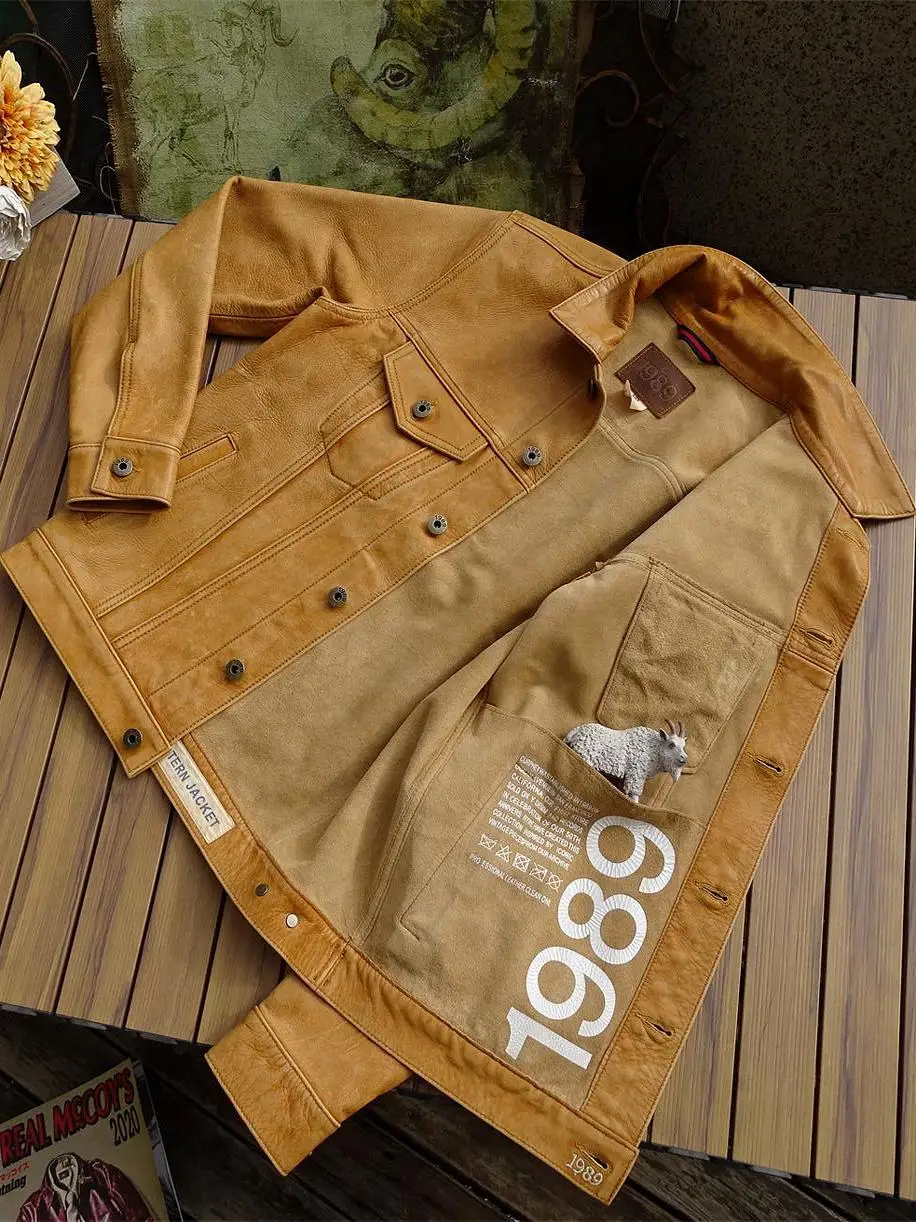
The key to mastering black leather jacket style is selecting a design that complements both your physical frame and your typical wardrobe. For broader selections and inspiration, explore our collection of men’s black leather coats featuring these timeless designs.
Finding Your Perfect Fit: Sizing and Measurements
The perfect leather jacket should feel like a second skin—comfortable, protective, and flattering to your proportions. Unlike other garments that offer more forgiveness in fit, leather jackets require precise sizing since they don’t stretch significantly and professional alterations can be costly.
Key Measurement Points:
Shoulders: The seams should align precisely with your shoulder ends—neither hanging off nor cutting in before your natural shoulder terminates. This provides the foundation for proper fit throughout the jacket.
Chest: Allow approximately 2-4 inches of room beyond your actual chest measurement. You should be able to comfortably zip the jacket while wearing a light sweater underneath, without restriction when crossing your arms.
Sleeves: Properly fitted sleeves should end at your wrist bone when arms are at rest, with slight rising when you extend your arms forward. Enough room should exist to accommodate a watch or long-sleeved shirt without bunching.
Torso: The jacket length varies by style, but generally should end at or just below your belt line. Bomber jackets typically sit higher at the waist, while cafe racers and classic styles extend to the hip.
Mobility Test: A well-fitted jacket allows you to comfortably hug yourself without excessive pulling across the back. You should be able to drive comfortably and reach forward without significant restriction.
When purchasing online, take accurate measurements of a well-fitting jacket you already own rather than relying solely on standardized sizing charts. Remember that different brands and even different styles within the same brand may size differently.
For leather jackets, consider sizing down if you fall between sizes, as leather naturally stretches and conforms to your body over time. However, the jacket should never feel uncomfortably tight when new, particularly across the shoulders which won’t stretch significantly.
Understanding the relationship between perfect coat length for height ensures your jacket maintains balanced proportions with your overall silhouette—a critical element that many overlook when focusing solely on width measurements.
Quality Construction: What to Look For
Beyond leather type and style, the construction quality fundamentally determines your jacket’s longevity, comfort, and overall value. Before investing, carefully examine these crucial elements:
Stitching
– Look for straight, even stitching with consistent tension
– Double or reinforced stitching at stress points indicates durability
– Approximately 8-10 stitches per inch reflects quality craftsmanship
– Thread color should complement the leather rather than contrast dramatically
– No loose threads, skipped stitches, or puckering should be visible
Hardware
– Zippers should operate smoothly without catching
– YKK or other recognized zipper brands indicate quality
– Metal components should feel substantial, not hollow or lightweight
– Buttons and snaps should secure firmly without excessive force
– All hardware should be properly anchored to prevent pulling through the leather
Lining
– Quality jackets feature full lining in the body and sleeves
– Satin, cotton, or viscose linings provide comfort and ease of wear
– Properly attached linings without bubbling or puckering
– Reinforced pocket bags that resist tearing
– Inner pockets should be securely constructed and practical in size
Panel Construction
– Fewer panels generally indicate higher quality leather (large, unmarked hides)
– Panel seams should align precisely and lie flat
– Strategic panel placement that follows the body’s natural contours
– Armholes set properly for mobility without excessive material
– Even coloration across all panels (unless intentionally varied)
Finishing Details
– Clean, consistent edge finishing
– Properly installed collars that lie flat or stand appropriately
– Even dyeing without streaking or fading
– Interior details like hanging loops and wind flaps properly secured
– Absence of adhesive residue or unfinished edges
Our collection of men’s leather coats demonstrates these quality construction principles, with each piece undergoing thorough inspection before being offered to our customers.
Styling Your Black Leather Jacket: Versatility in Action
The beauty of a black leather jacket lies in its remarkable versatility—few garments transition so effortlessly between different looks and settings. Mastering the art of styling this classic piece elevates your entire wardrobe.
Casual Everyday Looks
– Pair with dark wash jeans and a simple white t-shirt for timeless appeal
– Layer over a hoodie with jeans and sneakers for contemporary street style
– Combine with chinos and a plain crewneck sweater for casual sophistication
– Add to joggers and a fitted t-shirt for a modern athleisure approach
– Wear with black jeans and boots for an effortlessly cool monochromatic look
Smart-Casual Ensembles
– Layer over a button-down shirt with chinos and desert boots
– Pair with a lightweight turtleneck, tailored trousers, and Chelsea boots
– Combine with a simple polo shirt, dark jeans, and loafers
– Wear with a fine-gauge sweater, textured trousers, and brogues
– Match with a chambray shirt, wool trousers, and leather sneakers
Evening Attire
– Style over a crisp white shirt with black jeans and Chelsea boots
– Pair with a fitted dark t-shirt, tailored trousers, and leather dress shoes
– Layer with a fine-knit sweater, dark jeans, and suede boots
– Combine with a textured button-up, slim chinos, and desert boots
– Wear with a simple dark shirt, tailored trousers, and sleek loafers
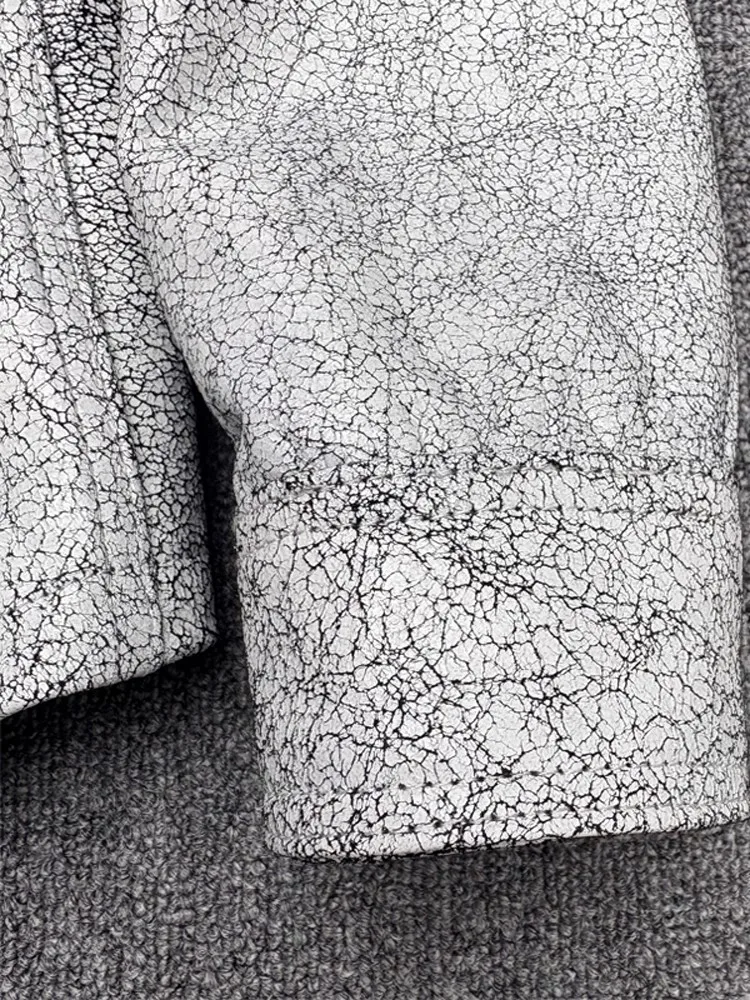
Seasonal Adaptations
In colder months, leverage your jacket’s layering potential with scarves, gloves, and lightweight sweaters. During transitional seasons, the jacket serves perfectly as your primary outerwear piece. Understanding the fundamentals of mastering casual black leather jacket styling helps you maximize its versatility throughout the year.
When accessorizing, maintain balance—let the jacket remain the focal point by keeping other elements complementary rather than competing. A quality watch, minimal jewelry, and thoughtfully selected footwear complete the look without overwhelming it.
Price Points and Value Assessment
Understanding leather jacket pricing helps set realistic expectations and make informed purchasing decisions. While cost doesn’t always guarantee quality, certain price thresholds typically reflect significant differences in materials and craftsmanship.
Entry-Level ($200-400)
– Often features genuine leather or lower-quality top grain
– May use synthetic linings and basic hardware
– Simpler construction with fewer panels and details
– Limited durability, typically lasting 2-5 years with regular wear
– May require more frequent conditioning and care
Mid-Range ($400-800)
– Generally uses good quality top-grain leather
– Features better hardware including YKK or similar quality zippers
– Incorporates improved linings and internal construction
– Offers better stitching quality and reinforcement at stress points
– Expected lifespan of 5-10+ years with proper care
– Represents the best value for most consumers
Premium ($800-1500)
– Utilizes high-quality full-grain or superior top-grain leather
– Features premium hardware that withstands extensive use
– Includes thoughtful details like superior pocket construction and specialized linings
– Exhibits expert stitching and panel configuration
– Offers distinctive style elements without compromising quality
– Can last decades with appropriate maintenance
– Begins to showcase artisanal craftsmanship
Luxury (above $1500)
– Showcases exceptional full-grain leather with superior hand feel
– Incorporates the highest quality hardware, often custom-designed
– Features meticulous hand-finished details and perfect symmetry
– Offers unique design elements or customization options
– Represents both a fashion statement and heirloom-quality investment
– Can appreciate in value over time if properly maintained
When evaluating cost-per-wear value, consider how frequently you’ll wear the jacket and how long it will remain relevant in your wardrobe. A $1000 jacket worn 100 times annually for ten years costs just $1 per wear—often less expensive than lower-quality alternatives requiring replacement.
For examples across different price categories, explore our selection of men’s leather shearling coats showcasing various quality levels and design approaches.
Mens Leather Coat, Mens Long Leather Coat
Price range: $225.22 through $235.58 Select options This product has multiple variants. The options may be chosen on the product pageMens Black Leather Coat, Mens Leather Coat
Price range: $181.52 through $197.20 Select options This product has multiple variants. The options may be chosen on the product pageMens Brown Leather Coat, Mens Leather Coat
$846.94 Select options This product has multiple variants. The options may be chosen on the product pageMens Shearling Coat, Mens Sheepskin Coat
$888.08 Select options This product has multiple variants. The options may be chosen on the product page- Price range: $96.28 through $130.88 Select options This product has multiple variants. The options may be chosen on the product page
Mens Shearling Coat, Mens Sheepskin Coat
$2,257.19 Select options This product has multiple variants. The options may be chosen on the product page
Essential Care and Maintenance for Longevity
Proper maintenance transforms your leather jacket from a simple purchase into a lasting investment. With consistent care, premium leather develops character while maintaining its structural integrity for decades.
Breaking-in Process
– Wear your new jacket regularly for short periods initially
– Allow natural body heat to gradually soften the leather
– Avoid exposure to extreme temperatures during the first few weeks
– Apply light leather conditioner after the first month of wear
– Be patient—quality leather becomes more comfortable over time
Regular Cleaning Routine
1. Dust and wipe down with a slightly damp cloth weekly when worn regularly
2. Address spills immediately by blotting (never rubbing) with an absorbent cloth
3. Use leather-specific mild soap for visible dirt, applying with a soft cloth in circular motions
4. Wipe away soap residue with a clean, damp cloth
5. Allow to air dry completely away from direct heat sources
6. Never use household cleaners containing alcohol or solvents
Conditioning Schedule
– Apply quality leather conditioner every 3-6 months depending on wear frequency
– Use products specifically formulated for your leather type
– Test conditioner on an inconspicuous area first
– Apply sparingly using a clean cloth with gentle circular motions
– Allow to absorb completely before wearing (typically 12-24 hours)
– Pay special attention to high-wear areas like cuffs, collar and elbows
Storage Recommendations
– Store on a padded or wooden hanger to maintain shoulder shape
– Cover with breathable garment bag, never plastic
– Keep in a cool, dry location away from direct sunlight
– Maintain air circulation around the garment
– Insert acid-free tissue paper in sleeves to prevent creasing
– Never store in basement or attic areas with temperature fluctuations
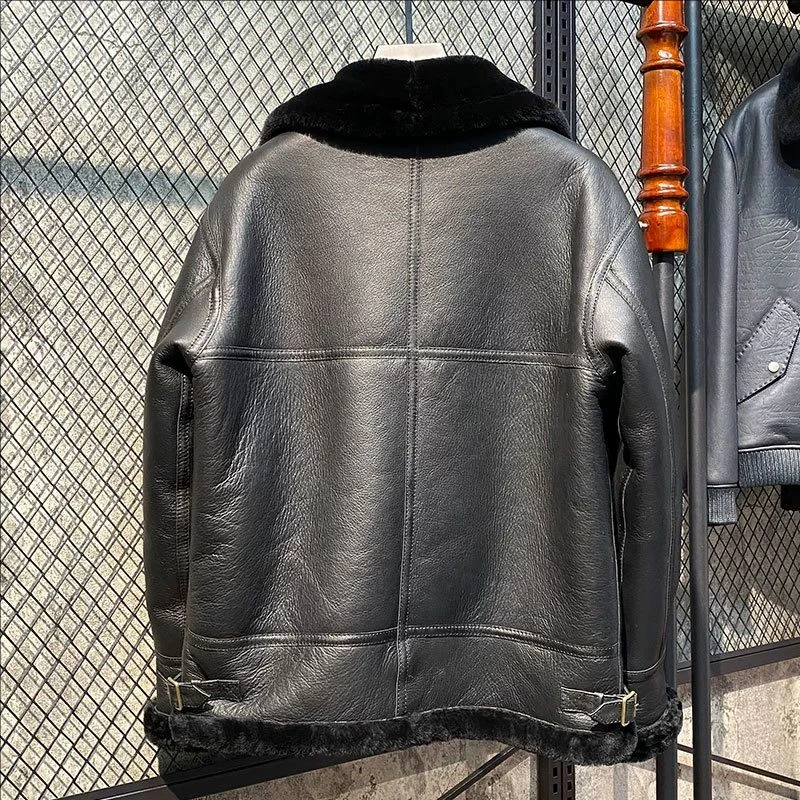
Handling Common Issues
For water damage, allow slow natural drying away from heat, then condition. Address minor scratches by gently rubbing with a clean finger to redistribute natural oils. More extensive care, including properly oiling your leather jacket, helps resolve specific issues while extending your jacket’s lifespan.
What Questions Should I Ask Before Purchasing?
Arming yourself with the right questions ensures you make an informed decision when investing in a leather jacket. Whether shopping online or in person, these inquiries help assess quality and suitability.
About Leather Quality:
“What specific grade and type of leather is used in this jacket?”
Look for clear, specific answers naming the leather type (cowhide, lambskin, etc.) and quality grade (full-grain, top-grain). Vague responses like “genuine leather” or “real leather” without further specification often indicate lower quality.
About the Tanning Process:
“How was this leather tanned, and what does that mean for care requirements?”
Quality manufacturers can explain whether they use chrome tanning (more water-resistant), vegetable tanning (develops beautiful patina), or combination methods, and how this impacts the leather’s characteristics.
About Construction Details:
“What type of stitching and hardware is used, and how is the jacket lined?”
Listen for mentions of reinforced stitching, branded hardware (like YKK zippers), and quality lining materials. Detailed responses demonstrate transparency and confidence in construction methods.
About Sizing Consistency:
“How does this brand’s sizing compare to standard measurements, and is this model true to size?”
The response should address whether the jacket runs large, small, or true to size, and ideally provide specific measurement guidance beyond simple S/M/L designations.
About Break-in Period and Comfort:
“What should I expect in terms of break-in period, and how will the fit change over time?”
Knowledgeable sellers will explain how their specific leather type adapts to wear, typically noting that quality jackets conform to your body while maintaining their structural integrity.
About Return Policy:
“What is your return policy if the jacket doesn’t fit as expected?”
Reputable retailers offer clear, reasonable return policies, recognizing that fit can be challenging to assess, especially when purchasing black leather jackets for men online.
Common Mistakes to Avoid When Buying a Black Leather Jacket
Even with careful research, certain pitfalls can lead to disappointment with your leather jacket purchase. Avoid these common errors to ensure satisfaction with your investment:
Prioritizing price over quality: While budget considerations are important, selecting the cheapest option often results in poor durability and appearance. Leather is an area where quality differences are particularly noticeable and impactful on longevity.
Choosing fashion over fit: Settling for an ill-fitting jacket because you love its style leads to discomfort and limited wear. No matter how attractive a jacket appears on the rack, if it doesn’t fit your proportions correctly, it won’t deliver the desired look.
Ignoring leather type and quality: Different leather types serve different purposes. Selecting lambskin for rugged daily use or cowhide for a soft, luxurious look creates a mismatch between expectations and reality.
Overlooking construction details: Hardware failures and lining tears often occur before the leather itself shows significant wear. Examining zippers, buttons, stitching, and internal components prevents premature functional failures.
Neglecting maintenance requirements: Purchasing a leather jacket without understanding or committing to its care needs leads to premature aging and deterioration. Quality leather requires ongoing maintenance to maintain its appearance and integrity.
Buying for a single occasion: Purchasing a statement piece that only works with specific outfits limits versatility and value. Your jacket should integrate with multiple aspects of your existing wardrobe.
Following extreme trends: While subtle contemporary updates to classic designs can be appealing, highly trendy elements quickly look dated. The most satisfying leather jackets balance timelessness with personal style.
For reliable quality that helps avoid these common pitfalls, consider exploring our collection of men’s shearling coats featuring classic designs with thoughtful modern updates.
Is a Custom-Made Leather Jacket Worth It?
For those considering the ultimate leather jacket experience, custom-made options offer compelling advantages alongside certain considerations that merit careful thought.
Advantages of Custom Jackets:
Perfect Proportional Fit: Beyond standard sizing, custom jackets address individual body asymmetries and unique proportions that off-the-rack options cannot accommodate.
Material Selection Freedom: Choose precisely the leather type, weight, finish, and color that aligns with your preferences rather than compromising with available options.
Design Personalization: Incorporate specific details meaningful to you, from pocket placement and quantities to collar styles and hardware finishes.
Avoidance of Branding: Custom pieces typically lack obvious branding or logos, offering a cleaner aesthetic focused on craftsmanship rather than marketing.
Relationship with the Maker: Developing a connection with a skilled craftsperson can lead to deeper appreciation of the garment and future custom pieces.
Potential Drawbacks:
Significant Cost Premium: Expect to invest at least 50-100% more than comparable ready-made premium jackets, with truly bespoke options commanding even higher prices.
Extended Creation Timeline: Quality custom work typically requires 4-12 weeks from measurement to delivery, requiring patience and advance planning.
Craftsperson Research: Finding reliable artisans requires diligent research into portfolios, reviews, and previous client experiences.
Limited Return Options: Unlike retail purchases, custom work typically allows only for correction of errors rather than complete returns if you simply dislike the result.
Custom jackets make the most sense for those with unique fitting challenges, very specific aesthetic preferences, or those seeking a truly special garment after already owning several quality leather jackets. For most people, selecting from high-quality ready-made options provides better value while still delivering excellent results.
For comprehensive information covering all aspects of selection and care, our definitive guide to men’s black leather jackets provides additional insights to inform your decision, whether you choose custom or ready-made options.

